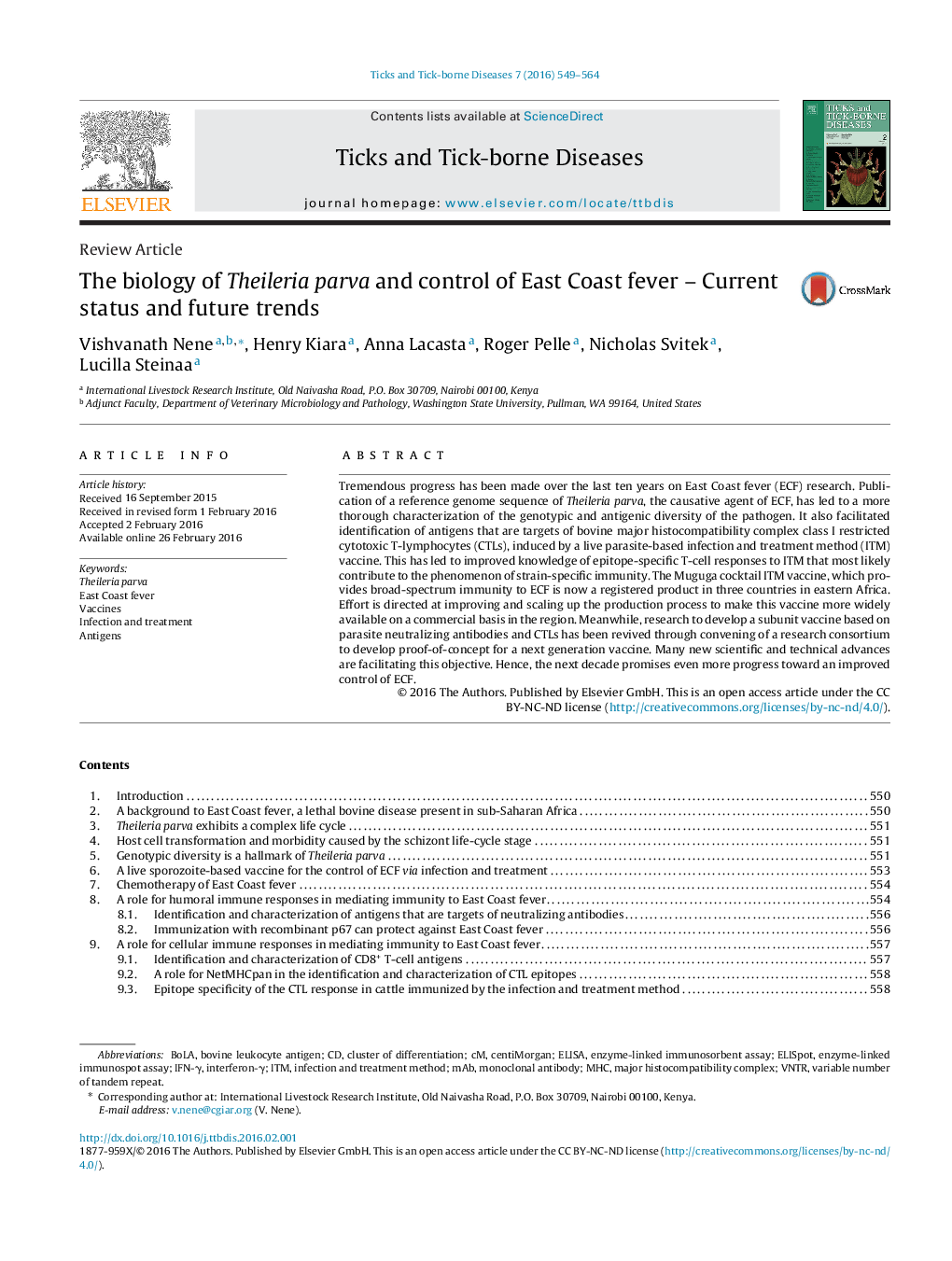| Article ID | Journal | Published Year | Pages | File Type |
|---|---|---|---|---|
| 5806988 | Ticks and Tick-borne Diseases | 2016 | 16 Pages |
Tremendous progress has been made over the last ten years on East Coast fever (ECF) research. Publication of a reference genome sequence of Theileria parva, the causative agent of ECF, has led to a more thorough characterization of the genotypic and antigenic diversity of the pathogen. It also facilitated identification of antigens that are targets of bovine major histocompatibility complex class I restricted cytotoxic T-lymphocytes (CTLs), induced by a live parasite-based infection and treatment method (ITM) vaccine. This has led to improved knowledge of epitope-specific T-cell responses to ITM that most likely contribute to the phenomenon of strain-specific immunity. The Muguga cocktail ITM vaccine, which provides broad-spectrum immunity to ECF is now a registered product in three countries in eastern Africa. Effort is directed at improving and scaling up the production process to make this vaccine more widely available on a commercial basis in the region. Meanwhile, research to develop a subunit vaccine based on parasite neutralizing antibodies and CTLs has been revived through convening of a research consortium to develop proof-of-concept for a next generation vaccine. Many new scientific and technical advances are facilitating this objective. Hence, the next decade promises even more progress toward an improved control of ECF.
